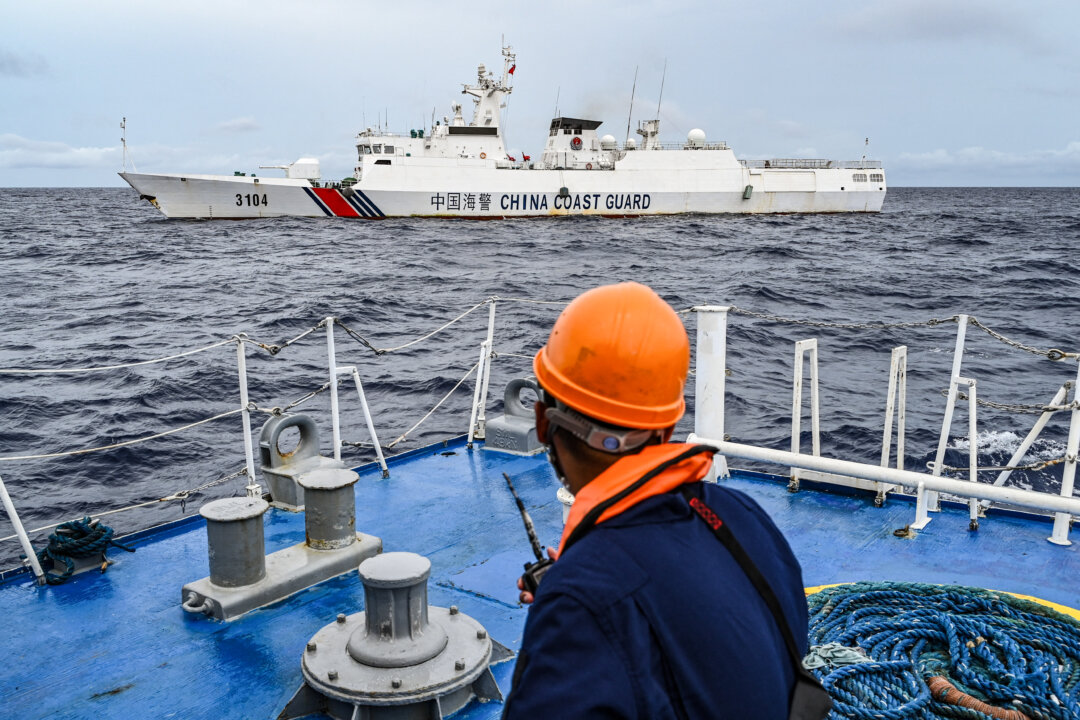One of the Philippines’ largest coast guard vessels returned to port on Sunday, after a series of clashes with Chinese ships near the disputed Sabina Shoal.
The Philippines said on Sunday that it will dispatch another ship to Sabina Shoal after one of its largest coast guard vessels completed a nearly five-month mission at a disputed atoll in the South China Sea.
Alexander Lopez, spokesperson of the National Maritime Council, confirmed the return of Teresa Magbanua, which was sent to Sabina Shoal to monitor what officials referred to in a May statement as “illegal activities“ by Beijing.
Lopez highlighted Manila’s commitment to maintaining a continuous presence at the Sabina Shoal, which is asserted by the Chinese regime as part of its sweeping territory claims in the South China Sea.
Citing an order from the Philippine Coast Guard chief, Lopez said another vessel would “immediately take over,” without giving details. “Definitely, we will keep our presence there.”
The Philippines deployed BRP Teresa Magbanua to the Sabina Shoal in April and, citing the discovery of crushed corals on the sandbars, they suspected Beijing was building an artificial island there. Sabina Shoal, situated approximately 75 nautical miles west of Palawan, falls within the Philippines’ exclusive economic zone (EEZ) under international law.
“After more than five months at sea, where she carried out her sentinel duties against overwhelming odds, BRP Teresa Magbanua is now sailing back to her homeport with her mission accomplished,” National Maritime Council Chairperson Executive Secretary Lucas Bersamin said in a statement on Sunday.
Throughout its deployment, BRP Teresa Magbanua “challenged an encirclement by a larger flotilla of intruders, battled inclement weather, with her crew surviving on diminished daily provisions,” Bersamin said.
The vessel’s return was necessary for the medical needs of its crew and to undergo repairs, and once it has been resupplied and repaired, it will resume its mission, along with other coast guard and military assets “as defenders of our sovereignty,” Bersamin added.
The Chinese Communist Party (CCP) has repeatedly expressed its dissatisfaction with the Philippines’s presence in the area, which it claims ownership as Xianbin Reef.
In August alone, there were at least three collisions between the Chinese and the Philippines vessels. The more recent incident took place on Aug. 31, when Chinese forces surrounded and rammed Teresa Magbanua.
Manila said Teresa Magbanua sustained damage as a result of a Chinese Coast Guard vessel “deliberately” ramming it three times without provocation. Beijing accused a Philippine ship of running into the Chinese vessel.
China confirmed Teresa Magbanua’s departure on Sunday, saying the Philippines vessel “withdrew” from Xianbin Reef.
“The Philippine side’s actions have seriously infringed on China’s territorial sovereignty” and “seriously undermining regional peace and stability,” Liu Dejun, a spokesperson for the China Coast Guard, said in a statement.
Liu added that Beijing would continue to carry out what they called “rights protection and law enforcement activities” in the water it claimed.
Tensions remain high in the South China Sea as the CCP ramps up its efforts to pursue its claims in the strategically important and resource-rich waterway. The United States, the United Kingdom, Australia, and the European Union have all denounced the CCP for its aggressive actions against the Philippines in August.
Senior officials from the Philippines and China held talks in Beijing days ago, as Manila seeks to explore ways of de-escalating the situation. Both sides vowed to stick to their positions on Sabina Shoal.
According to Beijing’s readout, Chinese Vice Foreign Minister Chen Xiaodong demanded the Philippine side to “immediately withdraw relevant vessels” and pledged to “firmly safeguard its sovereignty.”
Philippine Foreign Affairs Undersecretary Theresa Lazaro “reaffirmed the consistent position of the Philippines and explored ways to lower the tension in the area,” her ministry said in a Sept. 12 statement, which characterized the meeting as “frank and candid.”
“Both sides agreed to continue discussions on areas of cooperation, especially on hotline mechanisms, coast guard cooperation, and marine scientific and technological cooperation,” it added.
Reuters contributed to this report.

